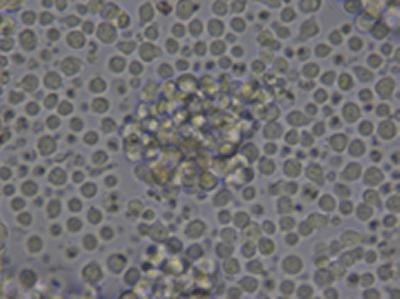Southampton scientists to investigate ways to prevent life-threatening complications in transplant patients

Scientists from the University of Southampton have received a grant from the blood cancer charity Leukaemia & Lymphoma Research to explore ways of preventing life-threatening side effects in patients receiving bone marrow transplants.
The team, led by Aymen Al-Shamkhani a Professor of Immunology, has received £270,000 for the three-year project to improve transplants, which often offer a last chance of a cure for patients with many different types of blood cancer.
When transplanted, donor bone marrow helps to replenish a healthy blood supply, repairing damage caused by chemotherapy. Among the blood cells transplanted are T-cells, white blood cells crucial to the body’s immune system that recognise alien cells and fight infection. In a process called graft-vs-leukaemia (GVL), these new T-cells hunt down any malignant leukaemia cells that have survived chemotherapy.

However, in many cases when the donor and patient are not an exact genetic match, donor T-cells also recognise healthy cells as ‘foreign’. The new immune system fights the patient’s body in a complication called graft-vs-host disease (GVHD). This occurs in around half of all bone marrow transplants and can be life-threatening and cause long-term health problems.
One way to reduce the chances of developing GVHD is to remove T-cells from the donor bone marrow at the time of the transplant and providing them a later transfusion.
However, delaying the introduction of T-cells reduces the vital GVL effect, creating a high risk of the blood cancer relapsing.
Prof Al-Shamkhani’s team will address these problems by investigating ways to stimulate donor T-cells so that they only target the cancerous cells and don’t get worn out, thus making the T-cells more effective at fighting the cancer while reducing the chances of GVHD.
Prof Al-Shamkhani said: “Recent research has provided some indication of ways in which GVHD can be prevented, although often the delayed introduction of the T-cells has led to relapse. By gaining a better understanding of the mechanisms of the disease and the way T-cells fight blood cancer, we hope to be able to design treatments that can deliver the best possible chances of survival.”
Professor Chris Bunce, Research Director at Leukaemia & Lymphoma Research, said: “GVHD in blood cancer transplants is a major side-effect and often leads to serious health problems, even if the original disease had been destroyed. The potential benefits of this project could go beyond blood cancers, as GVHD can occur in many transplants.”